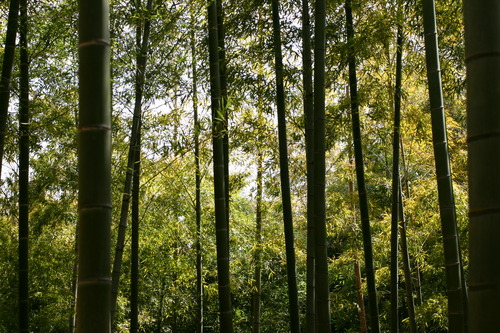
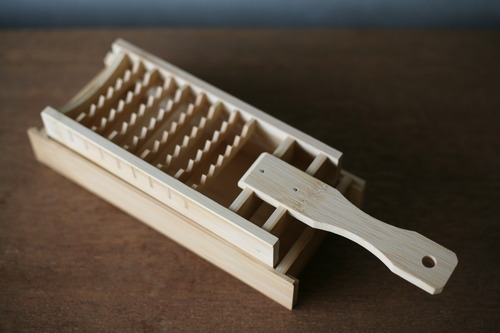
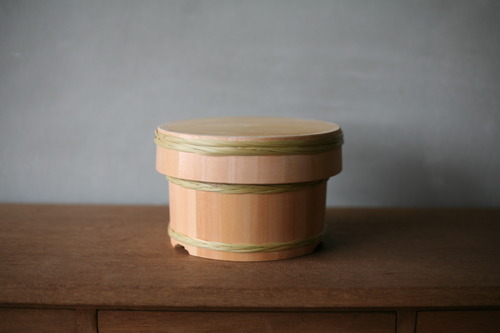
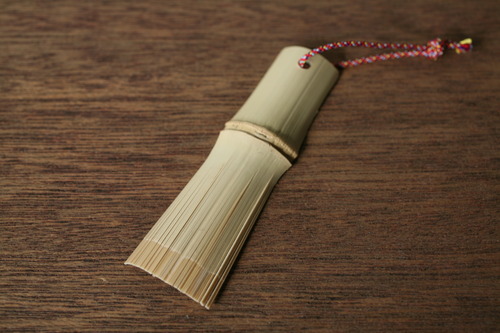
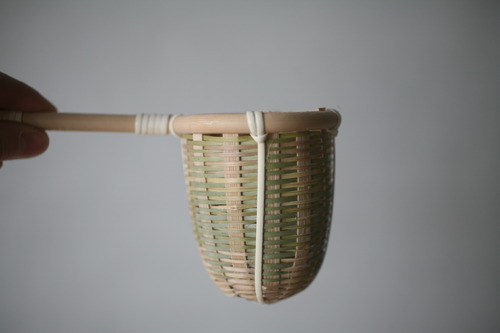
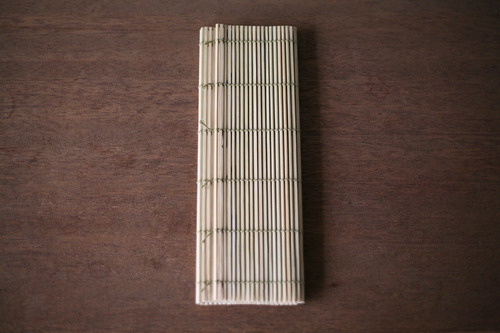
[Bamboo in Japan]
Bamboo is widely distributed throughout Japan, and tools made of bamboo have been used since the Jomon period. Bamboo is used not only for daily necessities such as baskets and colanders, but also for eating bamboo shoots, hunting tools such as fishing rods and spears, tea ceremony and flower arrangement tools, musical instruments such as flutes and shakuhachi, martial arts equipment such as bamboo swords and bows, children's toys, and also as housing materials. It is also used as a New Year's decoration as a plant for congratulation, since it is evergreen and grows straight and strong, giving a sense of vitality.
It is surprising that there are about 600 species in Japan and 1,200 species in the world. It grows very fast, with some records showing that it has grown more than 1 meter in one day. The life span is about 20 years. The trunk of the bamboo culm is hollow, and although it grows vertically, it does not grow thicker with age like a tree. The underground stem is also vigorous and grows rapidly horizontally, and a new bamboo shoot grows out of the underground stem. Bamboo is a truly mysterious being when you think about it, as it is both like a tree and like a grass, and has an ecology that is different from either of them.
When processing bamboo, craftsmen use bamboo that is five to seven years old when it begins to grow. Bamboo is cut down in the fall and winter, when the moisture content inside the bamboo is at its lowest. The bamboo is then allowed to dry naturally for several months and then heated to remove the moisture and oil from the bamboo. The bamboo is then exposed to the sun for several weeks and stored for at least one year while drying. Depending on the application, it may be dried for another 2 to 5 years.
Recently, plastic products have become popular as a substitute for bamboo products, and the production of bamboo material and bamboo shoots have decreased, resulting in an increase in the number of poorly managed bamboo forests in Japan. If properly managed, bamboo forests can become a tasty food source, a beautiful landscape, and a great resource with great utilization value. In recent years, bamboo has been attracting attention as an environmentally friendly natural material because it is one of the most sustainable resources on the planet, is highly durable, and is suitable for reuse. It would be great if we could incorporate bamboo products into our daily lives and practice a lifestyle that is connected to a recycling society, while feeling the cycle of nature. We also offer products made of Japanese bamboo. Please take a look.
Kagoshima Takeseihin's Onioroshi
https://www.shokunin.com/en/kagoshima/onioroshi.html
Yamaichi's Taketaga Ohitsu
https://www.shokunin.com/en/yamaichi/ohitsu.html
Kiya's Sushimaki
https://www.shokunin.com/en/kiya/sushimaki.html
Kiya's Bamboo Tea Strainer
https://www.shokunin.com/en/kiya/chakoshi.html
Kiya's Yakumiyose
https://www.shokunin.com/en/kiya/yakumi.html
Reference
https://www.maff.go.jp/j/pr/aff/1301/spe1_01.html